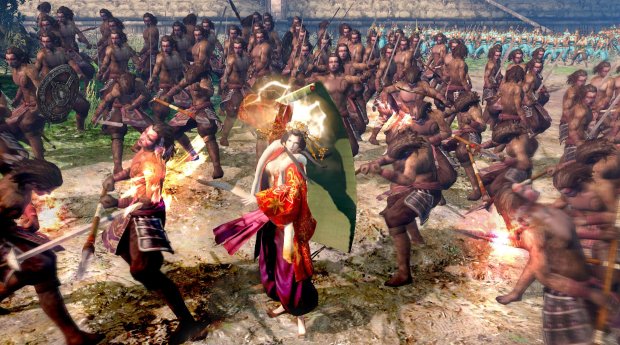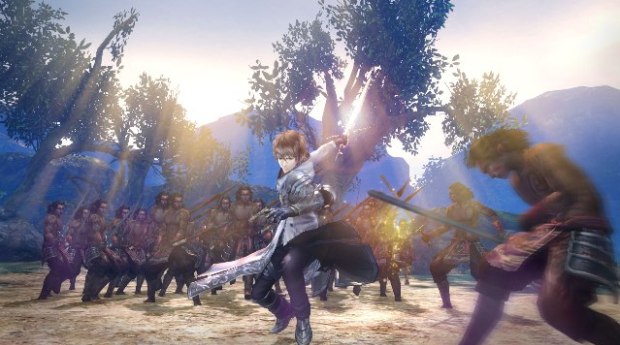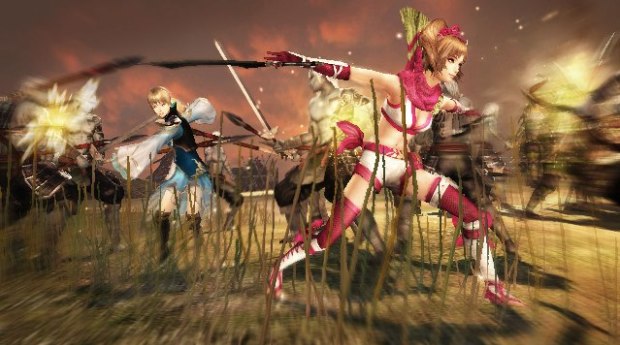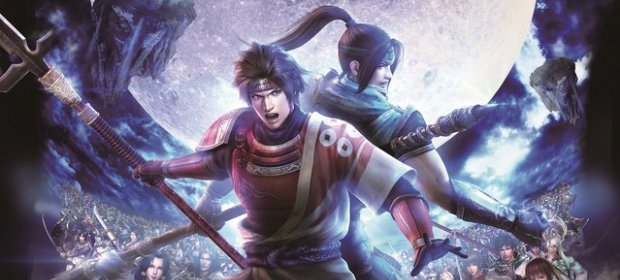The Orochi series is a combination of several of Koei’s other franchises, but where, say, Dynasty Warriors is loosely based on the Romance of the Three Kingdoms, Orochi takes place in a separate dimension and pits you against a demon threat. The “Ultimate” tag comes from the fact that this is the third re-release of Warriors Orochi 3, with a slew of new features and characters.
My first impression was much as I expected. You run around a battlefield, smashing square until everything on screen is dead, occasionally hitting R1 for a special attack. “Enjoyable,” I thought, “but a bit simplistic.” Take some time, though, and the nuances of Orochi grow on you. First up are the characters, of which you pick three to take into battle and switch on the fly. There are nearly 150 to choose from, although they are unlocked over the course of the campaign, and each has their own fighting style and special moves: some are quick, some have a long range, others have a knockback that buys you some space to manoeuvre.

Switching character in combat triggers a special power, contextually offensive or defensive, and there’s a rudimentary combo system as well, using triangle alongside square to dance through crowds of enemies. It’s rare that you’ll stop moving, and your kill count from each battle will regularly top 1,000. When not using your other team members they’ll retreat to heal, but you can get them to fight by your side by hitting down on the d-pad.
All of the above combine to create a solid core of fun, trying out different characters and combinations, before you add in the different weapon upgrades you can find or buy for all of them and the mini-bosses that dot the levels and require a bit more thought to defeat. Occasionally you’ll have to wrestle with the camera to focus back on the action, and boss fights can become a little chaotic – losing your target in the mass of bodies on screen is commonplace – but overall it’s thoroughly enjoyable.
The story mode sees you travelling back in time to recruit members for your army to tackle the demon menace – in the starting timeline they have all perished in the war by this point. It’s a little silly, but easy enough to follow. All the voice acting is in the original Japanese, and happily the translation job in the subtitles makes sense. The exposition during battles isn’t great though, as you’ve no time to read subtitles while ploughing through a press of bodies. This is even more of a shame because Warriors Orochi 3 Ultimate makes use of the controller’s speaker to deliver dialogue – something I’m surprised hasn’t been done before – adding a layer of 3D into the audio. It sounds weird, but it’s a great feature.

As well as obtaining weapon upgrades, characters level up as you use them, increasing damage and speed, for instance. This could threaten to unbalance things, forcing you to use the same team as they are higher levelled, but spare points are accrued during each battle and can be used to level up any character of your choosing, freeing you to experiment with your team. And while the level cap may be 100, you can reset it back to 1 for a permanent bonus to that character, encouraging replayability.
Duel mode has you pick three characters and use them to fight another team of three. It’s almost a pseudo fighting game but, with only two fighters squaring off against each other in an arena, it highlights the looseness of Warriors Orochi 3 Ultimate’s attacks and the camera difficulties tied to them: it’s just too hard to focus on one opponent.
Other modes include Shin Musou mode, which allows you to create your own scenarios on maps cleared in the campaign and upload them for other players to enjoy, and Unlimited mode, in which you use a five man team to clear a multi-levelled dungeon. In truth none of them are as enjoyable to play as the story mode, but experience and weapons earned from them can be brought back into your campaign game. For good measure, two player co-op is supported in most modes either locally or online, with the second player controlling another member of your team, or the other fighter in Duel mode.

As this is an updated version of a last-gen game, you won’t be surprised to learn that it won’t push the limits of your new console. Enemies – of which there can be up to 150 on-screen at a time thanks to the new hardware – are identically stamped from a handful of molds, and the stages aren’t visually arresting, although the playable characters are nicely detailed.
VERDICT: I’m sure fans will need no convincing to pick this up, but as someone new to Musou battle games I found this an excellent entry point. Getting a rhythm going as you charge across the battlefield can be quite hypnotic, and while it is easy for anyone to pick up and play, mastering it will take much, much longer.

VERY GOOD. An 8/10 is only awarded to a game we consider truly worthy of your hard-earned cash. This game is only held back by a smattering of minor or middling issues and comes highly recommended.
Review code provided by publisher.





